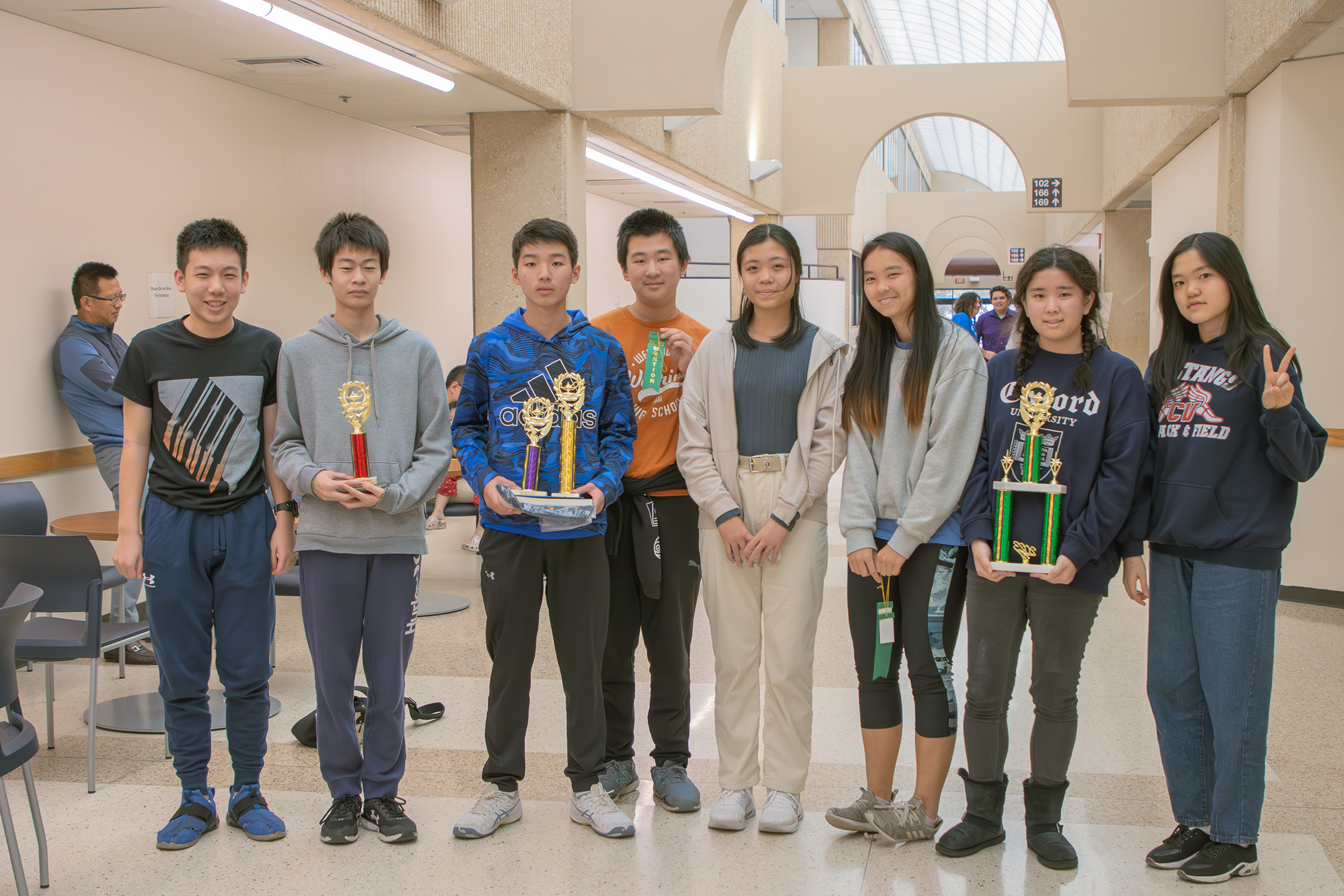
On Saturday, Nov. 4, the Texas A&M University Department of Mathematics hosted its 32nd Annual High School Mathematics Contest, one of the largest and most prestigious high school math competitions in Texas.
“This contest is our department’s most established outreach activity,” said Dr. Igor Zelenko, a professor of mathematics and the contest director. “It gives students the opportunity to develop their creative abilities by trying to solve nonstandard mathematical problems and encourages them to study math beyond the high school level. It helps prepare them for college as they begin to carve out their STEM (Science, Technology, Engineering and Math) career path.”
Matthew Kroesche ‘19, a Texas A&M mathematics graduate student and 2019 electrical engineering graduate, is one of many students who continues to experience positive outcomes from his participation in the contest.
“I’ve competed every year from 2010 to 2014, and I’ve discovered that this contest is about much more than how you perform,” he said. “It’s also about enjoying the community of people involved.”
In the years before COVID, the contest typically hosted more than 500 students from 50 schools across Texas. Those numbers declined when the contest went online in 2020 and 2021 with the Power Team exam only. However, attendance is beginning to return to pre-COVID numbers, now that the contest is being held in person again. This year, 330 students from 45 different schools participated. While some of those students competed remotely as part of the Power Team competition, 302 students were on the Texas A&M campus to compete in person.
The contest consists of 10 categories and includes five subject tests covering various levels of math, ranging from pre-algebra to trigonometry and advanced mathematics. Students may take any test reflective of the level of the math course in which they are currently enrolled or higher. These subject exams are comprehensive, meaning higher-level exams may include questions related to lower-level exams.
Students also compete in the Best Student exams, which include questions from any level of high school or Advanced Placement math curricula that often are more challenging than ones in the regular subject exams. Open and closed divisions are available for this part of the competition. The closed exam is limited to students who have not completed 10th grade.
The top two students in each division are awarded trophies and books. Additionally, the top three students in the open division are awarded $2,000 scholarships to study mathematics at Texas A&M.
While the subject and Best Student exams are taken individually and only final answers are submitted, schools may also form teams and compete in the Power Team exams, in which teams are given an exam made available online one week prior to the contest. All competing teams must submit their complete solutions the morning of the contest. Typically, this exam is approached as a research project in which most of the problems are related to each other, starting with simpler ones and ending with very challenging ones. Power Team contestants are expected to work only with their team members, and they are not allowed to use the Internet or other resources. The work is graded according to correctness of solutions, and each argument in the solution must be properly justified. This competition very closely mimics the process of scientific research and gives students a flavor for being scientists.
The last competition of the day and highlight event — the Buzz Contest — is a mathematical version of a spelling bee, complete with all the excitement and adrenaline befitting the competition’s grand finale.
“In its simplest form, there would be just one word, ‘buzz,’ and you would say ‘buzz’ if the number that is in use when your turn comes is a multiple of seven or has a seven as one of its decimal base ten digits,” said Dr. Douglas Hensley, professor emeritus of mathematics and emcee for the Buzz Contest. “If a contestant slips up and says the number instead of ‘buzz,’ they are eliminated.”
To make things more challenging, the Buzz Contest uses several codewords to represent a variety of different numerical properties. Students must recall what number they are going to say while simultaneously factoring that number in their heads.
“It’s a fun way for students to challenge themselves after finishing their individual exams, and it's always the highlight of the competition,” Hensley added.
Finally, a Sweepstakes contest involving all the participating schools takes into account the achievements of all participants from each respective school throughout the day.
This year’s contest was sponsored by MathWork, MapleSoft and Texas Instruments, each of which provides licenses for their products along with various prizes. All participants, coaches and volunteers also receive an official t-shirt designed by the contest organizers each year.
Learn more about the Texas A&M High School Math Contest and see this year’s results.